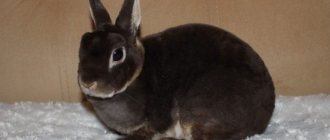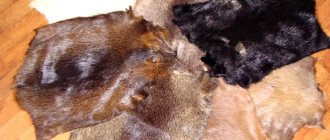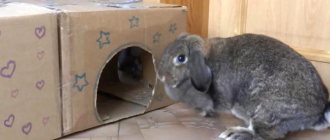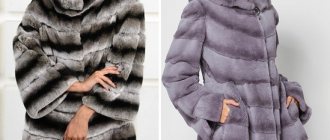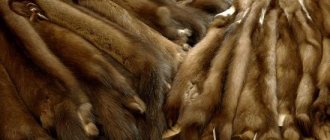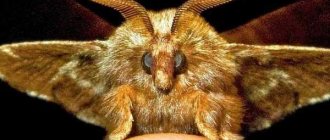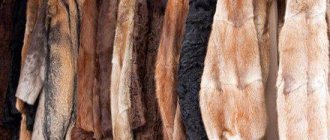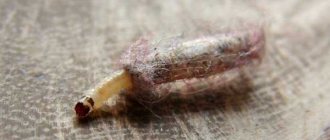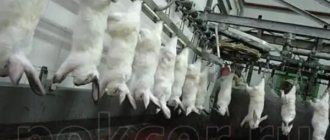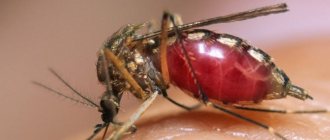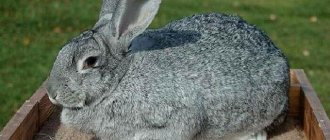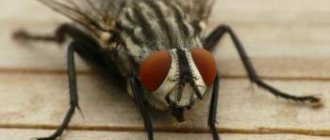Regulars of fashionable fur salons and simply lovers of light, airy and delicate fur products are well acquainted with Rex fur coats. For those who are perplexed and wondering what kind of animal this is, here is a little information.
—>
Rex is a specially bred breed of rabbit, distinguished by its uniform, beautiful, dense fur and special “plushness.”
Fur coats made from improved rabbits are rapidly gaining popularity due to their beautiful appearance, which is not inferior to the best examples from mink, beaver and chinchilla, and their relatively affordable cost.
Rex - what kind of fur is this?
These fur coats are made from a rare breed of rabbits; they were specially bred for the mass production of women's and children's clothing.
The rabbit fur is pleasantly dense, and the wool is evenly short (1-2 cm).
Rex fur qualities:
- smoothness;
- plush softness;
- the fur is completely straight;
- When the sun hits it shines beautifully.
Reference! A new breed of rabbits, “Rex,” was specially bred by breeders; they crossed an ordinary rabbit with a “Royal” fellow from Germany. Rex coats are very similar to chinchillas due to their black-blue tint.
Features of Rex rabbit fur coats
The main advantage of these fur coats is lightness, which the mouton does not have.
Fur lends itself well to processing. The resemblance to mink and chinchilla opens up huge opportunities for designers at inexpensive prices.
Reference! In terms of warmth, experts compare the Rex rabbit only to mink and mouton. Therefore, modern winter clothes for women and children are made from it.
The only drawback of such a fur coat is its average wear resistance, which is about 2 seasons. Although experts recommend purchasing models with cut pile in natural tones, then it will last up to 5 years, maintaining its original qualities.
Reviews from owners
Rex rabbit fur coats of chinchilla color receive most of the flattering reviews. In terms of protection from the cold, they are not inferior to their chinchilla counterparts, they look no worse, and are much cheaper.
To take full advantage of the latter advantage, buyers prefer domestically produced fur coats sold directly from clothing factories. The only thing that many do not take into account is the lack of resistance of this material to moisture.
No less popular than chinchilla options are custom-cut Rex rabbit fur coats. The lightness of the material allows owners of maxi-length products not to feel the weight of the clothing.
Often the choice is made between the Rex rabbit option and the mink one, taking into account the price and practicality of the purchase.
As for the durability of the product, many buyers claim that with proper care, a fur coat can withstand at least 10 seasons. [Total: 7 Average: 3.9/5]
Fashionable styles
Stylish, interesting models are obtained by combining textures and a combination of various shades.
Consider the popular models of fur coats from Rex:
Hooded
Models with a hood are much warmer; you can do without a hat. Therefore, these fur coats are quickly sold out by girls, the fur is beautiful and fluffy, even uncut.
Beautiful combinations with expensive fur create luxurious models .
"Perechka"
The original models are cross-cut fur coats with horizontal stripes laid out with laces.
New technologies make it possible to lay the pile in different directions and in different colors. The chinchilla color and black and blue combinations are especially beautiful.
Rex Rabbit
To extend their service life, Rex rabbit fur coats are shorn. Sheared fur is easy to recognize; it feels like soft plush to the touch.
These models are incredibly popular, especially among young people. They are valued for their velvety feel, resemblance to velor and lightness . They highlight the silhouette well.
Shortened models are now at the peak of popularity.
Autolady style
For fashionistas who drive a car, the most convenient option would be short fur coats. There are models with ¾ sleeves and a drawstring at waist level, so as not to restrict movement when driving a car.
Price category
The price of a fur coat largely depends on the quality of fur processing, the style of the fur coat, the conditions for raising rabbits and the country of origin. Industrial raising of animals makes it possible to keep the cost of Rex products within fairly affordable limits, but, of course, a Rex fur coat is much more expensive than its counterpart made from an ordinary rabbit. The price range is 30-60 thousand rubles.
Fur colors
Rabbit fur is beautifully dyed in various colors:
- blue (purple, dark green) – for extravagant girls;
- white - for romantics, this is the image of the Snow Maiden;
- black – the natural color of the rabbit without dyeing;
- gray is the classic color of a fur coat, the trendy shade is “orilage”;
- sand, beige - creative shades;
- “chinchilla” - also a natural color, supplemented for beauty with light stripes by the manufacturers;
- Multi-colored (striped) fur coats with contrasting colors are on trend.
Cropped models and crosscuts are distinguished by a special gloss and beautiful shine Similarity to a chinchilla and affordable price are the advantages of fur coats.
Tips for choosing a fur coat
a sheared rabbit in order to pass it off as an expensive mink, and a brown cloth is passed off as a beaver.
First check the fur, it should be smooth and soft.
Run a wet hand against the fur of the fur coat; there should be no lint on it.
Please note that the fabric is elastic, so over time the Rex rabbit fur coat will stretch a little.
You need to purchase a fur coat only in trusted stores, so as not to buy a fake. Modern fashionistas can easily choose a fur coat of any shade to suit their taste.
Knowing all the intricacies of the purchase, you will look great in this elegant fur coat of any shade.
Source
How to choose a quality Rex fur coat
When choosing a Rex rabbit fur coat, you need to inspect the product for the same type of fur. It should not have differences in the length of the pile, areas with wavy hair, and areas where the skin can be seen or easily felt.
If there are defects, they are most often located in the area of seams and folds, so these places should be inspected with special attention.
To make sure that it is a rex and not a shorn rabbit, you need to crush the fur a little. It should return to its original state as soon as the pressure on it stops.
If a future purchase is to replace a chinchilla fur coat in your wardrobe, then the first thing you should make sure is whether the color of the rabbit skins is natural. To do this, you should carefully examine the fur to look for areas that are colored incorrectly. If the fur coat is decorated with the skins of other animals, these elements also need to be checked for defects and the quality of painting.
Rex Rabbit: what is this new animal and why is its fur so valuable?
Over the past 10 years, there has been an increase in demand for products made from Rex rabbit fur. Unlike the regular rabbit, Rex is a completely new species. It was bred artificially by crossing a chinchilla and an ordinary rabbit. The result made it possible to obtain excellent fur with a set of many positive qualities. Regular rabbit fur does not have a very good reputation in the market due to its poor durability. It begins to fall out with terrible force literally from the first day of wear. Therefore, many who are familiar with rabbit fur first-hand are skeptical about products made from Rex rabbit. But you should know that this fur is really much superior to the quality of the fur of ordinary rabbits.
Characteristics of fur
This fur has been used in fur coat production for a long time. The shorn rabbit diligently claims to be a neighbor to the noble mink, but before the appearance of the Rex, it was not able to maintain its presentation for more than two seasons. Rabbit fur coats quickly dried out and treacherously “bald,” upsetting their owners . The situation changed with the advent of a new breed.
—>
How is it different from others?
The quality of fur and the methods of processing it existing today lead to the fact that an inexperienced buyer cannot always determine to which animal he owes a beautiful fur coat. Let's try to figure out how to distinguish high-quality rex from minks, beavers and chinchillas.
In order to achieve the mink effect, the rex is carefully processed, cut and dyed . As a result, the skin becomes thinner than mink. The inner surface of the fur of a mink coat should be white or light beige without streaks that occur during special processing of rabbit fur.
Beaver fur is more durable and, accordingly, more expensive . Differences from the Rex are determined by touch if you stroke the fur coat against the grain. Beaver fur is more elastic and tough, sometimes even a little prickly. The rabbit is gentle and soft in all directions. When examining fur from the inside out, you should pay attention to the size of the pieces - beaver skin is much larger than rabbit skin. There is one more difference: beaver fur has a softer back side, unlike the slightly crunchy one of the rex.
It is more difficult to distinguish a chinchilla from a rex. A non-specialist will have to focus on the size of the pieces from which the fur coat is sewn (a chinchilla is much smaller than any rabbit) and the price of the product. Chinchilla fur coats are classified as expensive.
!— Jaay — Mobile — Content — 250*360 — 3 — >
Pros and cons of the material
The dense and uniform fur of the Rex rabbit is the same length over the entire surface of the skin, and the pile itself is very soft and velvety to the touch . Therefore, products made from it differ:
- smoothness;
- plush soft surface;
- short straight fur without wavy;
- shine when exposed to sunlight;
- sufficiently high thermal insulation properties;
- ease.
The only thing in which Rex loses to more expensive furs is wear resistance . The beautiful rabbit coat of their Rex will last less than its beaver or mink counterpart. However, you cannot compare it with an ordinary rabbit, because it is guaranteed not to lose its appearance for at least five seasons, and with high-quality manufacturing and appropriate care, the wear life of the product can increase to 10-13 years .
Important! A Rex fur coat must be chosen strictly according to size, because rabbit fur is subject to stretching during wear, and a model purchased “with room for growth” will very quickly turn into an oversized fur coat.
—>
What color is the rex?
The palette of natural colors here is quite wide: from white to black, including the characteristic chinchilla color, which is highly valued by manufacturers . In addition, this fur lends itself very well to dyeing, which makes it look similar to more expensive furs. Another result can be a bright, extravagant fur coat in blue, green, pink or purple, which is very popular with young fashionistas.
History of the variety
Rexes are considered a breed that originated in France in the early 20th century. A family of Belgian giants gave birth to rabbits with short and very dense beautiful fur. This natural mutation prompted animal owners to breed them. And the new breed was called “Rex”, with a hint of the “royal” position of these animals.
In the 20s of the last century, the Russian scientist Serebrovsky, interested in the new breed, tried to take the couple out of Berlin. But according to German law this was prohibited. To get around the rules, the biologist crossed the rabbit with another species. The resulting individual differed from the “Rex” only in color, but the restriction did not apply to it. This is how the royal look ended up in Russia.
Nowadays, rex breeding is carried out even in China, and the best products from this valuable fur are produced in Spain and Germany.
History of the origin of the breed
Probably each of you has heard this phrase - Rex rabbit. How is it different from an ordinary rabbit, and why does it have such a name?
The ancestors of the Rex rabbit are representatives of the Belgian breed. The animals first appeared in 1919 in France. For a long time they remained unnoticed, and only in 1924 they were presented at an exhibition in Paris and aroused universal admiration and mass love. After this event, Rex rabbits were distributed throughout Europe, Asia and America, becoming inhabitants of farmland and favorites in the home.
Rex in Latin means king, king, which corresponds to the quality of the skin of this domestic animal. The rabbit appeared as a result of a mutation in the genome of the Belgian giants. It acquired its final appearance after a long selection of representatives of domestic and wild breeds.
In 1988, another variety of the breed appeared called the Mini-Rex.
Feature of fur
Rabbit fur coats used to be very poorly rated due to the fragility of the material. But with the advent of the Rex breed, the situation changed. The fur of these animals grows at right angles, it is longer and thicker than that of other species, has an extraordinary softness and tenderness to the touch and lasts much longer.
This fur has a lot of color variations - charcoal, snow, brown, gray, deep blue and various reddish shades. Its quality depends on the conditions and place of raising the rabbit, as well as the time of slaughter.
Products made from “royal fur” are usually much more expensive than any other, and it is recommended to purchase them in elite salons to avoid encountering a fake.
A special feature of the fur from Rex rabbits is its unusual appearance; it gives the impression of being shorn, all the hairs are so equal in height. In addition, products made from these skins are famous for their extraordinary lightness. The pile has a very thick structure and good moisture resistance properties.
Fashionable models of fur coats from Rex
The original texture of this fur, as well as its relatively low cost, makes it an ideal material for creating designer products. Youth versions of fur coats are often made from Rex rabbit skins.
The most popular products are short-length, straight-cut, made from dyed skins.
Bright colors dominate here and geometric prints are possible . You can find products decorated with patterns, or details made of genuine leather and textiles. Models with a hood are also popular.
Also, analogues of fur coats from more valuable breeds of fur are made from Rex rabbit skins. Due to the fact that this material is visually indistinguishable from chinchilla, products are made from it that replicate fashionable models of expensive clothing.
Often, original elegant fur coats are created from the Rex rabbit. Here you can often find decor in the form of a hood-collar complemented with fox, silver fox or arctic fox fur, the natural color of which is preserved.
The autolady style is very popular - a short, fitted silhouette. The model may have a hood. A fashionable trend is to sew it from fur, which differs in color from the entire product.
Fashionable looks for winter 2021-2022
A Rex rabbit fur coat will perfectly complement both everyday and festive outfits. If the model is classic, then it is suitable for creating a retro style look. A fur coat with a straight silhouette and a geometric print will also go well with it. As accessories you can use a hat with a veil, a handbag made of genuine leather.
It is better to refuse costume jewelry, giving preference to jewelry made of precious metals.
The autolady fur coat model, as well as youth and chinchilla variations, will perfectly complement punk, casual, or folk looks. The first and last options can be complemented with catchy jewelry made of metal or natural materials, or a wide leather belt.
Original shoes and hats will highlight your chosen style. In the first option, preference should be given to a sporty or avant-garde option with an abundance of decor.
The third involves a fur or knitted hat and ugg boots. A casual look requires a minimum of flashy accessories.
Characteristics and description, types
Rex rabbits are quite large in size, some individuals reach 5 kg. Usually all individuals have an elegant constitution with narrow and fragile bones. The average body length of an adult specimen is from 40 to 55 cm.
Rabbits grow as follows. By one month of life their average weight is 650 g, by two - 700 g, by three - a little more than 2 kg, by four - 2.5-2.8 kg.
The smooth fur of the skin is very smooth and feels like velvet. If you run your hand against the hair growth, it instantly returns to its place, leaving no bald spots.
There are several types of rex.
Rex marder
The skin of rabbits resembles marten fur. This variety exists in two variations - regular-sized animals and dwarf ones (bred for decorative purposes).
Castor rex
This variety's coat color is always brownish. The name is translated as “king of the beavers.” There is usually a dark burgundy stripe down the middle of the back, and the sides are silver-gray. Castor has the best quality and very expensive fur; it is considered the most noble and elegant.
The least number of such animals is born in the population.
Chinchilla Rex
Less attractive in rabbit breeding, since there are many such colors in other breeds. Although the chinchilla rex has fur of much higher quality.
Mini Rex
They are bred only for decorative purposes, as pets, although their fur does not differ in quality from ordinary rexes. Rarely reach a weight of 2 kg, the usual weight is 1-1.5 kg.
There are many color options. They have a wonderful character - good-natured, cheerful and playful pets very quickly get used to coexisting with a person nearby.
Breed standard
The official description and characteristics of Rex rabbits are as follows:
- The head is small, elongated. Males are much wider and more powerful than females.
- The eyes are almond-shaped, their color usually matches the color. The White Rex has both red and blue eye colors.
- The neck is short and muscular.
- The ears are medium sized and set vertically.
- The mustache is short, curly or completely absent.
- The legs are strong and muscular. The claws are always the same color as the coat color.
- The body is voluminous and strong, much wider than the head. Females usually have a more developed dewlap.
- Weight from 3.5 to 4.8 kg.
- The coat is usually shorter than other breeds (up to 2 cm). Due to mutation, it grows perpendicular to the animal's skin. The lengths of the guard hair and the very dense undercoat are the same, which creates a velor effect. Curly hair is allowed only behind the ears. This feature of fur allows for many imitations, for example, marten.
- Colors. There are more than twenty of them. The most common are snow, lilac, agouti, black, chocolate, speckled.
- Fertility is low. The maximum number of rabbits at birth is 6.
- Performance. Up to 64% yield of suitable meat from the live weight of the rabbit.
Pros and cons of the breed
The advantages of this variety of rabbits include:
- high frost resistance (up to –30 °C);
- unpretentiousness in choosing food;
- high yield;
- fairly good early maturity.
The disadvantages of the breed are as follows:
- intolerance to hot climates and temperatures above +25 °C;
- low fertility of females;
- low survival rate of newborn rabbits;
- excessive fearfulness;
- increased aggressiveness as a reaction to odors;
- Possibility of breeding the breed only by professionals.
Mr. Tail recommends: care and maintenance
Rex rabbits are kept only in specially equipped cages or enclosures. The main requirement is to prevent high crowding of animals, since in this case the rabbits begin to actively gnaw on the walls and mesh.
Cages and enclosures should be made of hard wood or high-quality metal. Plastic is unacceptable, as rexes easily chew it and can significantly harm themselves.
The bottom of the cage can be solid or made of fine mesh. The bedding is made of straw, hay, sawdust, in which small fractions are unacceptable.
Nuances of caring for your Rex
- Since wear resistance is the weakest point of a rabbit fur coat, the main rule when using it is to minimize friction: do not carry a bag on your shoulder or the crook of your arm, lift the hem of a long model when you need to sit down, and if possible, do not put your hands in your pockets .
- The fur coat should be stored in a fabric case in a suspended state.
- If it gets wet, it must be dried at room temperature away from heating devices. Do not use a hair dryer or iron! After drying, the pile is carefully combed in the direction of growth.
- You can try to remove minor stains yourself using a dry mixture of semolina and starch. If a fur coat requires serious cleaning, then the only reliable way is professional dry cleaning services.
Jaay - Mobile - Content - 250*360 - 8
Feeding
The list of foods that should be in the diet of rex rabbits does not differ from the usual for this type of animal:
- fresh but dried grass;
- meadow and field hay and silage;
- twig food;
- ready-made industrial feed;
- pieces of fresh vegetables and fruits;
- a small amount of dried fruits and seeds in winter;
- roughage.
You should not add cauliflower and white cabbage, legumes, a lot of tomatoes, or lettuce to your diet. These products most often cause gastrointestinal upset in animals.
Specifics of care, advantages and disadvantages of the breed
The peculiarities of breeding the Rex breed are dictated, first of all, by the productive purpose of these animals. In most cases, owners of private farmsteads begin to keep animals not so much for the sake of meat (for this they use rabbits of larger and much less “capricious” varieties), but for the sake of magnificent skins. It is clear that for this it is necessary to create conditions that allow maintaining high quality fur.
To obtain high-quality fur raw materials, it is necessary to create certain living conditions for the animals and provide proper care.
For a particular rabbit breeder this means the following:
- Rex needs a microclimate that excludes the possibility of any increase in humidity (an indicator of no more than 50% is considered optimal). The lint on the animal's body grows vertically and gets wet through at the slightest dampness. At the same time, the skin deteriorates and loses its presentation. In addition, there is a high risk that the animal will freeze and catch a cold;
- equipment (feeders, drinking bowls) must also be arranged in such a way that the pets’ fur coats cannot become damp or dirty, because animals cannot be washed or bathed ;
- individuals of this breed are not recommended to be kept on mesh floors - they easily injure the soles of their paws, which leads to the development of pododermatitis;
- The animals are very sensitive to temperature changes - they tolerate moderate cold well, but suffer greatly from the heat. When the air temperature is above +25 degrees, they experience fainting, convulsions and even heat strokes.
Despite the attractive qualities of the breed, the difficulties of maintaining it greatly reduce its popularity among homestead owners. For such rabbits, living conditions are best suited in cages placed in a heated barn, where automatic temperature and humidity control equipment is installed, and not everyone has this opportunity.
To enrich the diet of rabbits, in the summer it is necessary to include various greens, vegetables, melons and fruits.
The principles of feeding animals of this breed are practically no different from those recommended for other varieties of rabbits. For normal well-being, animals need a balanced diet consisting of good hay, grains or mixed feed, as well as vegetables and fruits. In summer, it is useful for rabbits to be given tops of garden plants, wild herbs and the pulp of seasonal melons.
Rabbits of the Rex group have a calm character, but are quite timid and have difficulty withstanding stress. They are not prone to aggression, are affectionate and smart. Individuals of decorative varieties easily get used to the tray, love to play, and have excellent contact with children. The breed is considered not too susceptible to infectious diseases, but requires routine vaccinations against VGBV, myxomatosis and a number of other ailments. In addition, owners should be aware that rexes are sensitive to colds and often suffer from rhinitis.
In the photo - a rabbit of the Castor Rex variety (“beaver” color)
Rexes are very beautiful, and caring for them is not too difficult. However, given the low fertility of females, high mortality among young animals and high (compared to other breeds) feed costs, breeding these rabbits on a subsidiary plot can easily become unprofitable. The occupation will be profitable if the owner has experience in processing skins and the ability to sell them, since products of this type are highly valued on the market and can bring a good income.
Breeding
Reproduction of this breed is very difficult. A female rabbit usually gives birth to 4 to 6 rabbits. They require careful care; with minimal disturbances, the cubs quickly die.
Newborn rabbits are not particularly beautiful; rex rabbits “bloom” much later, when they reach maturity.
The first birth of a female is usually difficult and requires the assistance of a veterinarian or professional; during subsequent births, the female copes on her own. Usually, for the first time, the female rabbit is not able to prepare the nest on her own; she needs help with this, otherwise the death of the offspring is inevitable.
In addition, the giving birth female should have plenty of water available - she drinks liberally. Prenatal development of the expectant mother's nipples is also a prerequisite. If milk flows heavily, newborns cause pain to the rabbit and cause aggression, even to the point of destroying the offspring.
Rexes are not always caring mothers. If the mother rabbit’s attitude towards the cubs is negligent, then conditions for their survival should be created - artificial heating and lighting, formula feeding. Sometimes placing the baby rabbits next to another lactating female helps.
Special formulas or diluted condensed milk are used as artificial nutrition for babies. The rabbits are fed in this way for three weeks, then gradually plant foods begin to be introduced into their diet.
A novice farmer should not have this breed. Rex breeding is only possible for professionals in rabbit breeding.
Feedback from livestock farmers
Irina, 32 years old, Tambov region
I have never kept such a breed (although there are rabbits on the farm), but my daughter chose a decorative Rex rabbit for herself based on the photo. The little animal turned out to be extremely cute (I’m not even talking about beauty). The rabbit is calm and surprisingly smart. Almost immediately he began to respond to the nickname, he got used to the tray without any problems. No aggression: affectionate, jumps funny, plays, loves to sit in your arms. True, he chews on everything (when not in a cage), but this is a feature of the species. And so, a pre-cute creature. I recommend it to everyone as a pet, especially to families with children.
Georgy, 44 years old, Mozhga
For many years I kept Rexes - black, light gray and “marders”. I didn't notice any problems. I immediately placed the rabbits in an insulated shed. He made sure that they were properly fed, vaccinated and not “damp.” And the income from the skins turned out to be quite good, as long as a friend lived nearby who knew how to process them. This is not an easy task: you have to be an excellent craftsman to bring out all the beauty of the fur and not spoil anything. Even a regular clientele has developed among familiar furriers. Now my friend has left, and there is no one to bring the skins into marketable condition. I think I’ll still choose the time and learn how to process it myself. They even ask me for fur, and I don’t want to lose income.
